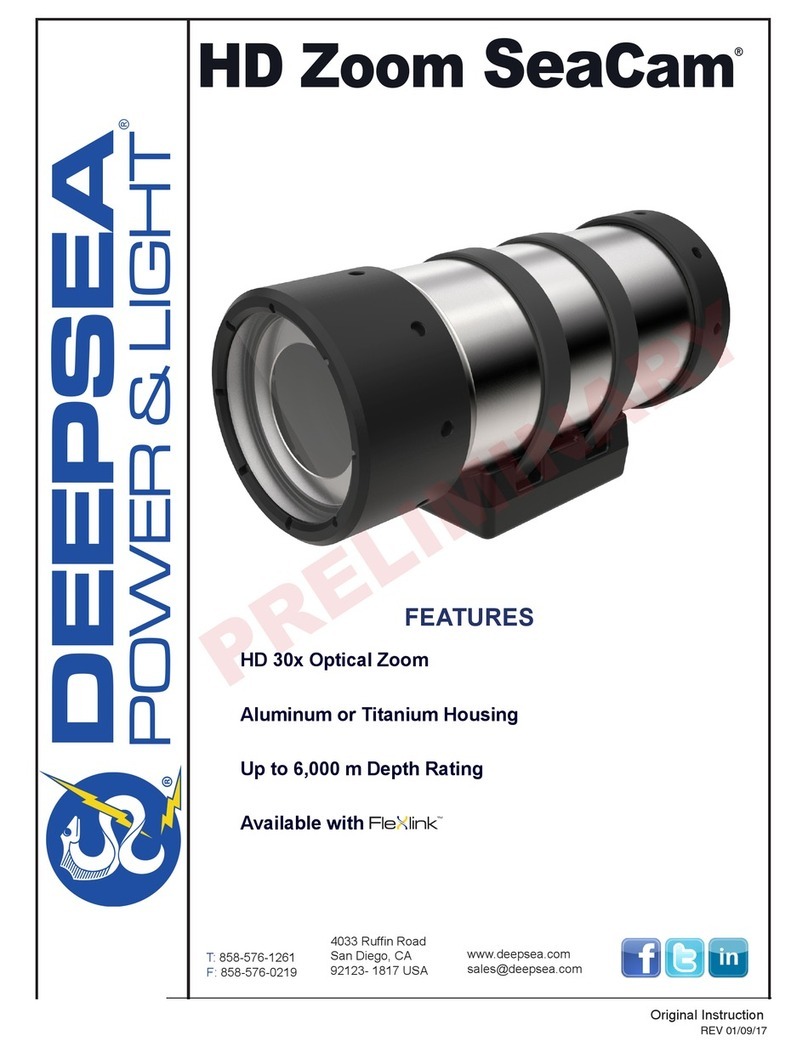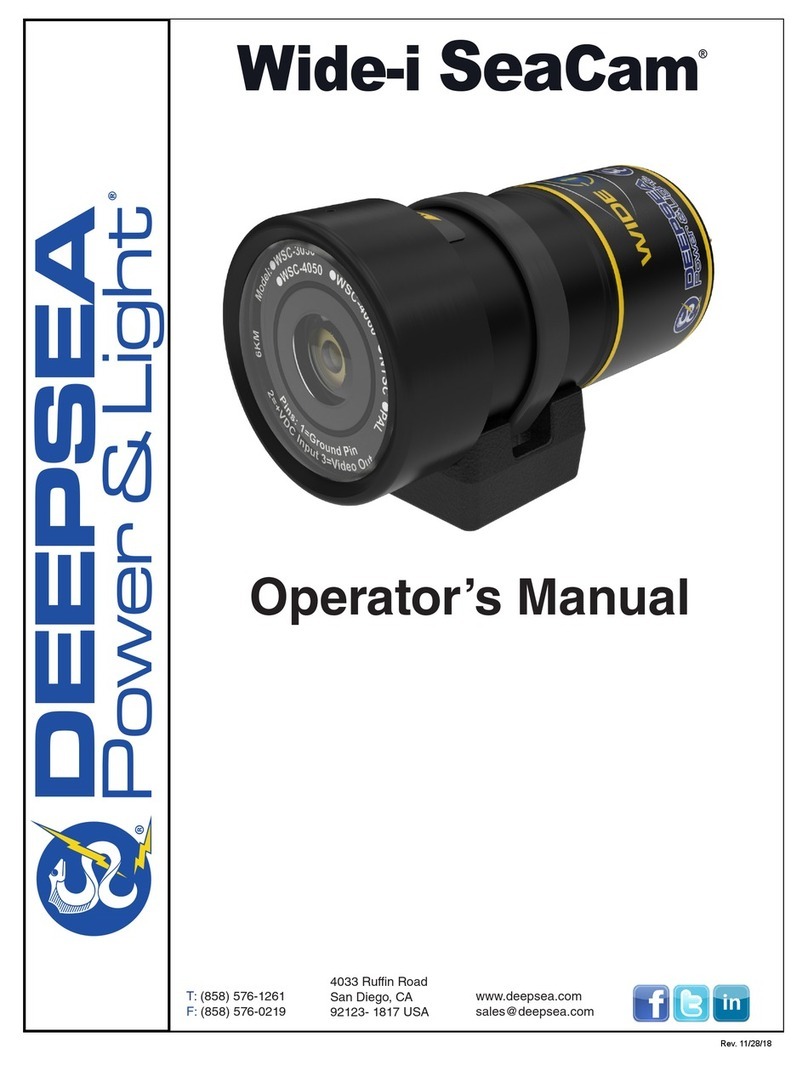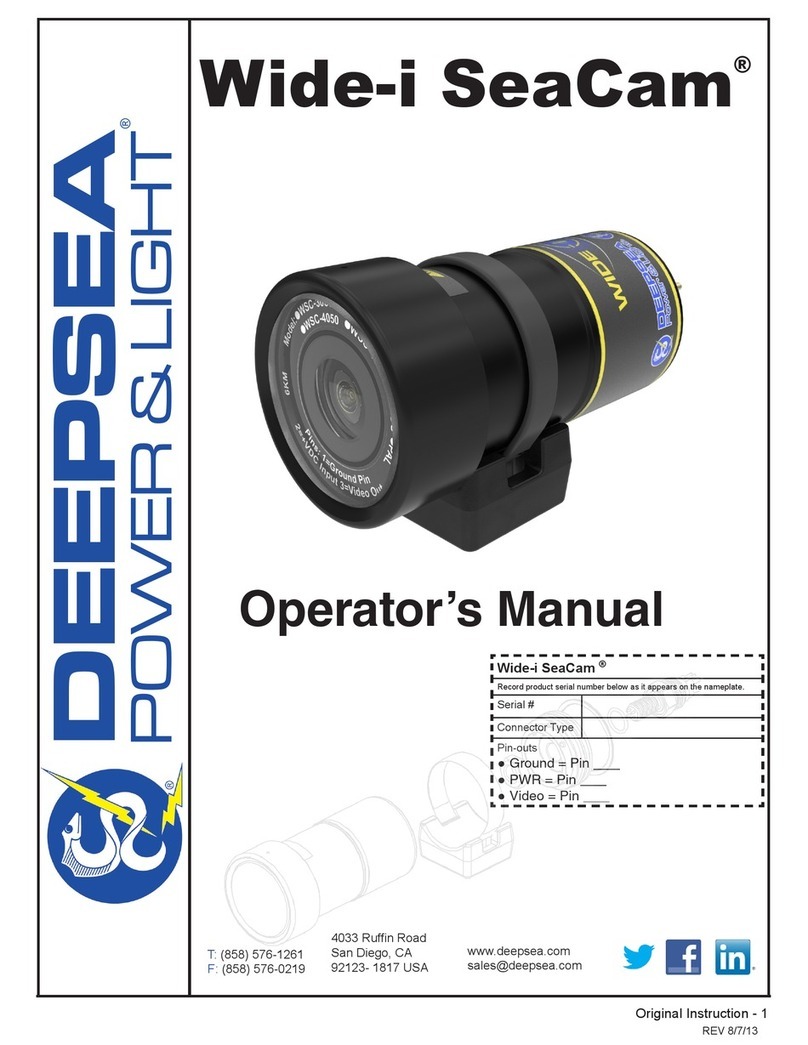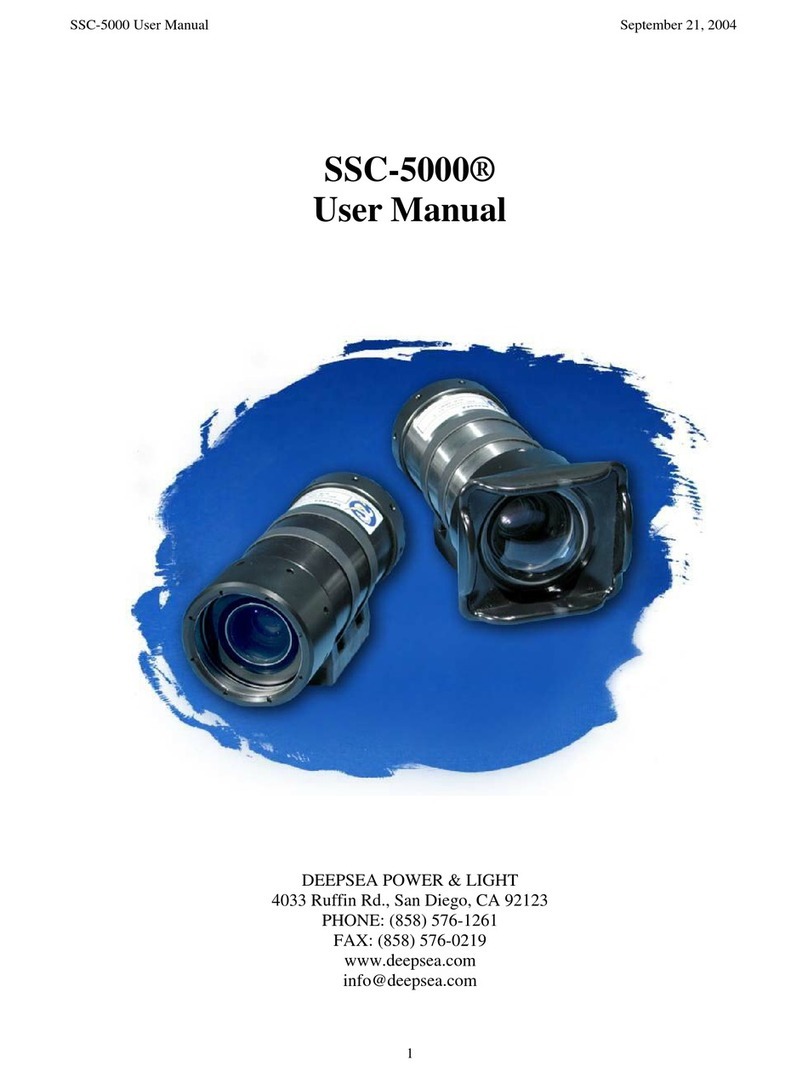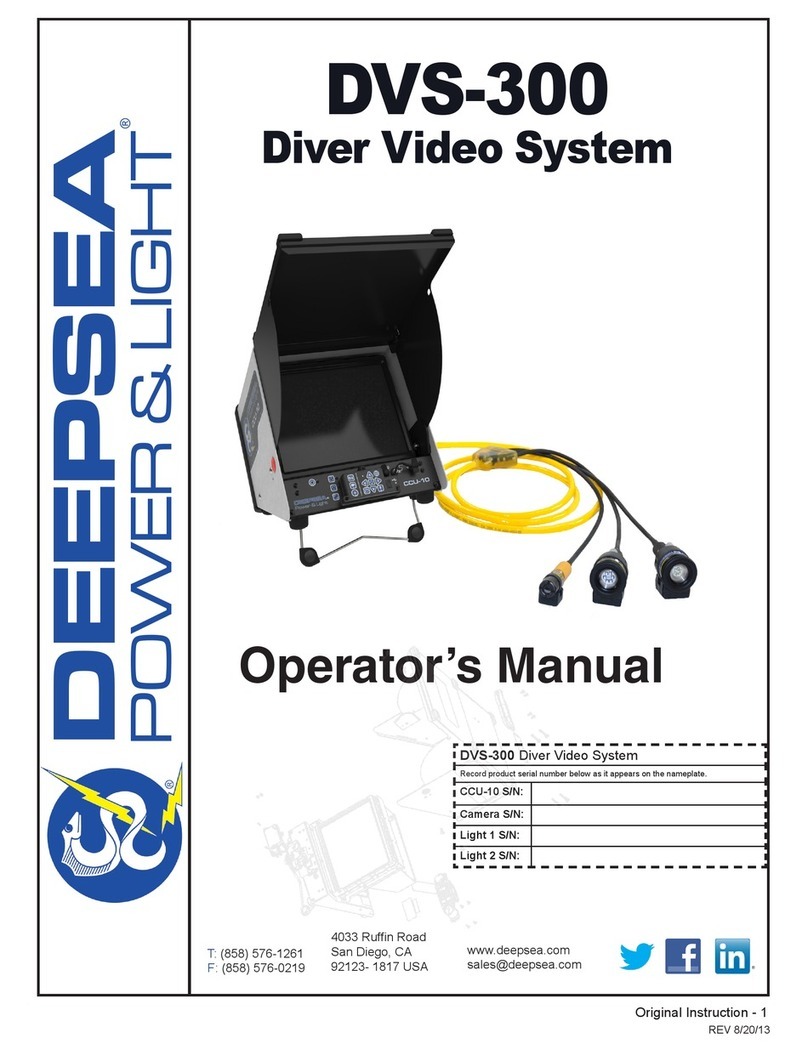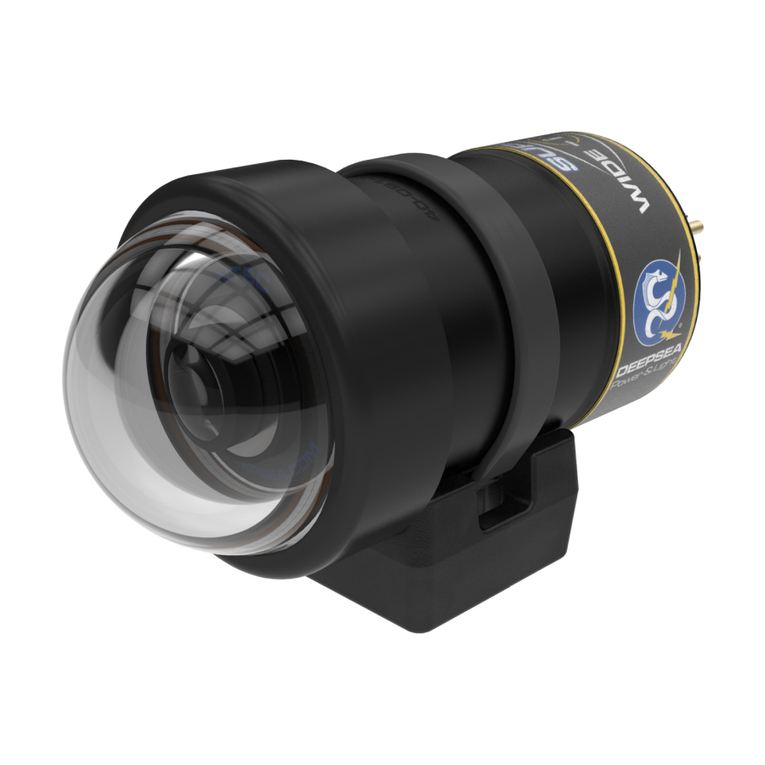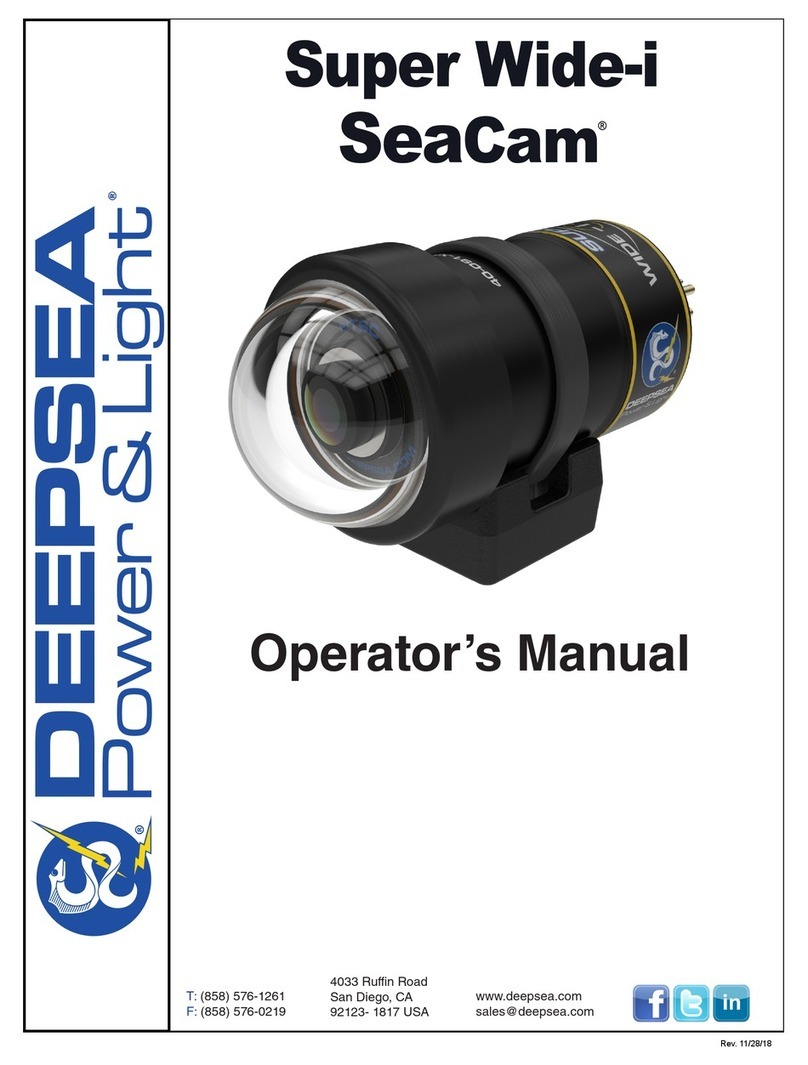
Multi-SeaCam®
Operator’s Manual
5
respective jacks on the power supply.
3. Plug the BNC connector on the topside of the
cable into the monitor or VCR video-in jack (a
BNC-to-RCA adapter may be required by the
monitor/VCR in use).
4. Lubricate the camera bulkhead connector with
an appropriate silicone lubricant (spray type
recommended), and using a linear motion plug
the female inline connector into the male bulkhead
connector on the back of the camera.
5. Screw the locking sleeves together firmly (hand
tight-do not use tools). The camera is now ready
for operation; switch the power supply ON to power
the camera. The camera draws approximately
160 mA of current during operation, and will work
when supplied between 11-30 volts DC.
DANGER
After each deployment, carefully check
to make sure the camera has not flooded. It is
possible for the camera to partially flood and then
reseal itself while underwater. Upon surfacing, the
camera can become internally pressurized, which
may be potentially dangerous. Additionally, if the
power remains on when the camera has partially
flooded, it is possible for electrolytic generation of
an explosive mixture of hydrogen and oxygen gases.
If a camera appears flooded upon removal from the
water, it should be treated as potentially dangerous.
Point the camera away from persons and valuable
equipment and make sure that the power is
disconnected. See the Flooding Repair Procedure
for more information.
Flooding Repair Procedure
If the camera stops working while underwater,
you should assume that it has been flooded. When
working on a potentially flooded camera, it is important
to use appropriate personal protective equipment to
include, at a minimum, eye and hand protection.
1. Immediately turn off the power to the unit.
2. Open the housing by removing the rear end
cap-retaining ring. Grasp the rear end cap in one
hand and the camera housing in the other. With
care, separate the two components using a linear
motion. If required gently twist components while
separating.
3. Pour out any water trapped in the housing.
4. If the camera is completely flooded, rinse the
internal components with clean fresh water in
order to minimize contamination and corrosion.
5. Allow parts to dry in air or a convection oven set
at 60° C (190° F). IMPORTANT! DeepSea Power
& Light cannot be responsible for any damage
incurred during emergency field repairs. Such
repairs should be undertaken only as a last resort
and by qualified personnel.
Troubleshooting
1. If the camera stops working while underwater
assume that it has been flooded. See Flooding
Repair procedure.
2. Once it has been determined that the camera is
not flooded, or if it does not turn on during pre-
deployment checks, troubleshoot in the following
sequence:
a. Check the cable/inline connector to make
sure that correct voltage and current are
being supplied, and that the correct sockets
are being used. See page 2 of this manual
for electrical specs and connector pin-outs.
b. Remove the connector. Inspect the
assembly for visual signs of wear. Use a
multi-meter check for continuity or shorts
in the connector. Try a spare connector, if
available.
c. Check the wires that go from the power
supply to the camera base for wear. If they
appear worn, replace them.
d. Check to make sure that the power supply
board is securely attached to the camera. If
it is loose, check for damage on the board.
If there appears to be no damage, reattach
the board to the camera. Try using a spare
driver board if available.
e. If the camera still does not work, return it to
DSPL using the RMA Procedure.
RMA Procedure for Repair
Should it be necessary to return your camera to the
factory, follow the procedure for the Flooded Camera
Repair above, and by leaving the connector partially
unscrewed. For warranty and non-warranty repairs
please contact DeepSea Power & Light for a RMA
number prior to returning your item. Please have your
light model number, serial number and any other
pertinent information along with a description of the
problem, on hand when you call, or include them in a
fax or e-mail. When shipping your item, be sure that the
freight is pre-paid (CODs will not be accepted) and that
the RMA number is clearly printed on the outside of the
box. All shipments should be sent to the address below:
